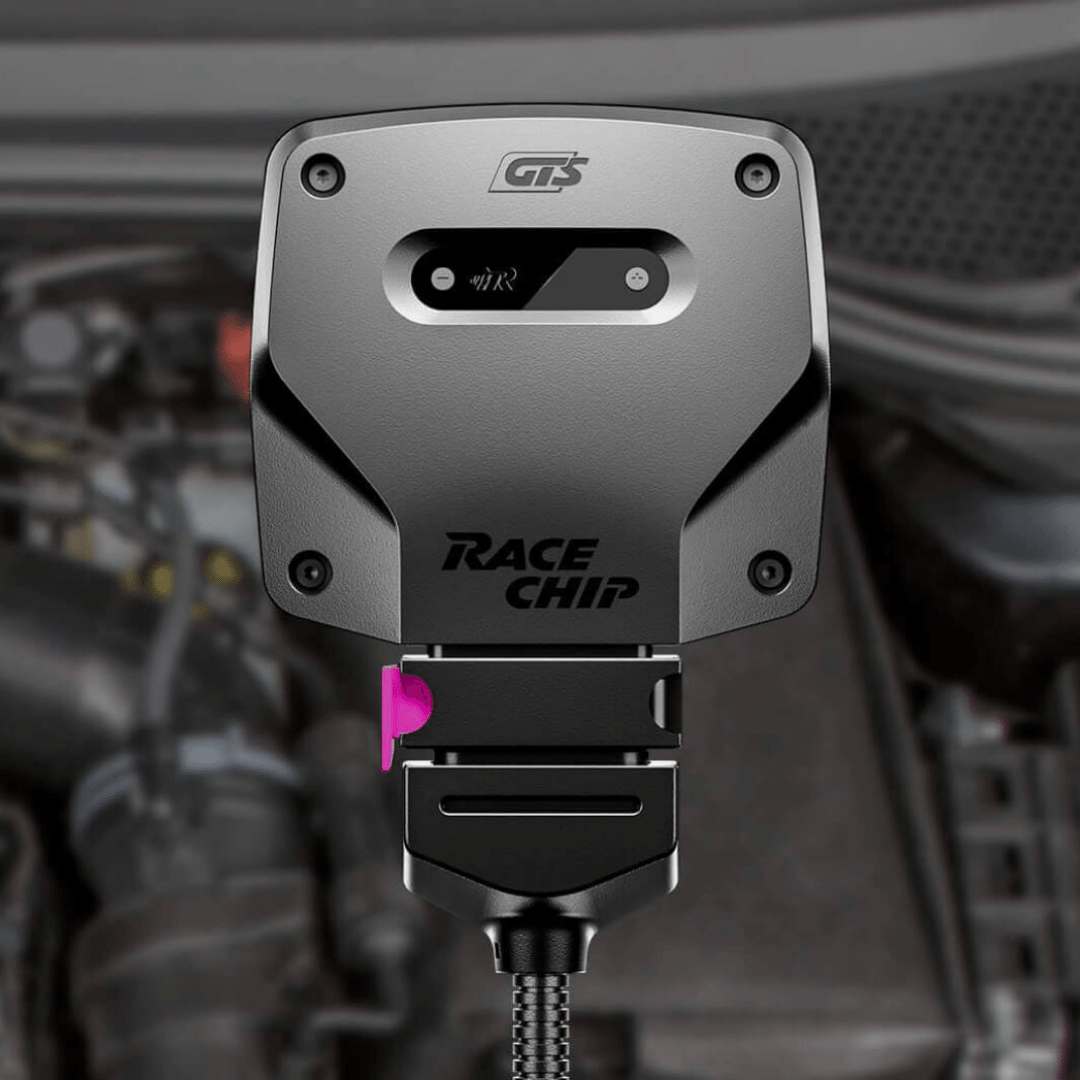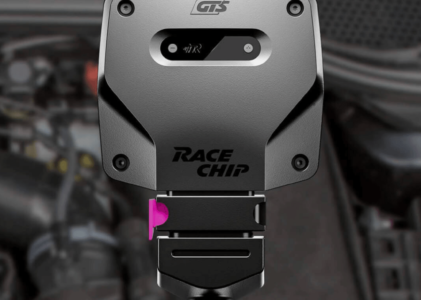If, like me, you are also a car enthusiast, you know how vital driving pleasure is. Driving is not simply getting from one point to another. It’s also all the sensations it provides.
For some time now, new products have appeared on the market. These are, of course, additional boxes. This technique is called chip tuning. The idea here is to increase a car’s performance using a different box electronically. But also, by extension, to reduce fuel consumption.
One of the market leaders is undoubtedly the German brand RaceChip. But then, what should we think of the RaceChip brand? Are RaceChip boxes reliable and efficient?
As an automotive professional, I had the opportunity to test the brand’s additional boxes. I will therefore give you my complete opinion on the products from RaceChip.
Before starting, I would like to point out that I am completely free to speak. The brand does not fund me, and I have not received products for free to rave about. So rest assured that my opinion will be sincere and true.
What exactly are RaceChip boxes?
RaceChip is a brand of additional boxes that offer several models: the S, the RS, and the GTS. The goal here will be to significantly increase the power (horsepower) and torque of your car (Nm).
- The RaceChip S promises a 20% increase in horsepower and 20% more Nm of torque.
- The RS model has 25% more horsepower and 25% more Nm of torque.
- Finally the GTS, the most efficient, 30% more horsepower and also 30% additional Nm of torque.
There is also an additional box at the accelerator pedal, the XLR. The latter will speed up the response time of the accelerator to the pedal. Now, let’s see together what this looks like in practice.
Do RaceChip boxes really work?
I used a Mercedes Class A (A220D) equipped with an original 190 hp engine to carry out this test. The case used in this test will be the RaceChip RS version, currently the best-selling.
1. Unboxing
Inside the box on RaceChip RS we find the case, the cable harness, the fixing clips, the serial connector, the assembly instructions as well as cable clips. We thus find everything necessary to carry out the installation of the box without any problem.
2. Installation
Let’s move on to installing this RaceChip RS box on my vehicle. To get started, simply open the hood and remove the engine cover. Next, you need to locate the boost pressure port in the engine compartment. Simply remove the connector from the boost pressure port and connect the RaceChip wiring harness marked with an “ A ” to your vehicle’s stock connector and socket.
Once boost pressure is attached, switch to manifold pressure. To do this, start by locating the manifold pressure port in the engine compartment. And just like the other connector, remove it from the manifold pressure port and connect the RaceChip wiring harness marked with a ” B ” to the stock connector as well as the socket on your vehicle.
Don’t worry. You will find in the instructions (or on the internet) all the information necessary to identify these two ports easily and make the connections. All that remains is to remove the deactivation connector from the wiring harness and connect the RaceChip box to the wiring harness.
A first test is necessary by switching on the ignition and without starting the vehicle (no lights, the control light is on on the device). Then start and check that everything is happening normally and that the accelerator pedal reacts normally.
All you have to do is secure and strap the box in a safe place under your hood and take the test drive, something I cover in the next test point.
3. The test drive
First road test of the Mercedes A220D with the RaceChip RS box. When starting and driving everything goes well to begin with. No engine lights, jerks, or strange engine reactions. It’s completely transparent. I wait until the engine is warm up and start accelerating on the highway. And I might as well tell you that I immediately felt the difference. It was mainly the couple that surprised me the most, this one is much better after installing the case. Also, the car has better acceleration as if the car’s engine was fresh from the factory. In short, rather convinced on the first try.
But for fear of the “placebo” effect, I still decided to stop at a friend’s house who has a tool that can’t lie: a power bench.
4. The bench test
To see if there is really a real gain obtained by the operation carried out, I decided to put the car on the power bench.
With the original and box uninstalled, my Mercedes Classe A220D obtains the following results: 186 hp in maximum power and 292 Nm of torque. It’s a little less than the original announced power but that’s normal, the car is not new.
After installing the RaceChip RS box, it is now the turn of the final verdict. Thus, we obtain the following results: 221 hp in maximum power and above all 341 Nm of torque!
5. The price
The RaceShip S box is sold for $169, the RS for $199, and finally, the GTS for $379 . Knowing that these are basic prices but that they are sometimes variable. I had to pay $289 for the RS model for my test version instead of $199. There are also additional options, such as management by app ($50) or the XLR for the accelerator ($199).
Despite the variability in price, I still found the price to be quite reasonable. It still remains frankly interesting in comparison with an engine reprogramming, which will cost around $600.
My final opinion:
So does the RaceChip add-on box work? Well, the RaceChip is a perfectly functional chip tuning product. Better torque, sharper acceleration, and even a reduction in fuel consumption were observed during my test phase. The latter alone could even justify the purchase of the box as fuel prices have soared in recent years.
Certainly, the gain obtained is slightly lower than the initial promise, but we are undoubtedly in the presence of one of the best additional boxes on the market!
The positive points:
- Competitive prices
- Quick and fairly easy installation
- Best couple and cover
- Reduced fuel consumption
The negative points:
- Variable pricing and big price differences between models
Is it possible to install the RaceChip box yourself?
So yes clearly, the installation of this type of product does not require any particular mechanical knowledge . Most often it is enough to dismantle the engine cover and connect the box to different ports or harnesses. Then attach it somewhere in the engine compartment.
Either way, all assembly instructions are provided with the case. Ordinary people will be able to do this with the documentation provided.
The advantage of carrying out the assembly yourself is to save money on installation (which becomes free) because it is often charged at a high price with some of my colleagues. And if you really have difficulties, any mechanic will be able to carry out the operation for you.
Also, you will be able to return your vehicle to production at any time.
Is RaceChip’s engine optimization completely safe?
Anything to do with the engine and performance can be scary, and rightly so of course. However, you have absolutely nothing to worry about using this type of box. You should already know that it is often the same engines that equip several production cars with different powers. For example, the same engine block can produce 90 horsepower on one side and 110 on the model above. This flange is nothing more than an electronic flange. Disabling it will not harm your car.
Thus, the modification is simply electronic and not structural. Safety margins are provided and it is simply a matter of exploiting a little more performance from an engine. In addition, be aware that some boxes offer a guarantee against engine damage.
However, it is still advisable to choose additional proven and quality boxes, such as the RaceChip.
How many horses can you win with RaceChip chip tuning?
So as you imagine, the gain will depend on the type of vehicle and the box chosen. However, it is possible to obtain a real gain ranging from 20 to 30% depending on the manufacturer. This gain is in power (hp) and torque (Nm). This allows for a more elastic engine, with better acceleration and increased maximum power. At the same time, preserving the safety margins of the engine.
The gains can be more or less significant depending on the engine of your car. But in any case, you will gain power and torque.
Is it true that fuel consumption drops with the RaceChip?
So yes, a large majority of users will notice a drop in fuel consumption. This is explained by the improvement in engine efficiency. In less technical terms, you will need to put less strain on your engine to get decent power from it. This results in a reduction in consumption of up to 1L/100. If you travel more than 15,000 km per year, the saving is almost $300. Which, therefore, makes the purchase of such a device profitable.
Should we prefer RaceChip chip tuning or reprogramming?
The question seems logical as the benefits of the two techniques are quite similar. In reality, it will depend a lot on each individual. I prefer RaceChip chip tuning because it is less expensive and offers the same results and guarantees as reprogramming. Also, the operation is very easily reversible and will not block the vehicle for many hours. It is, therefore, rather towards RaceChip chip tuning that I will turn except in specific cases of engine preparations ( conversion to ethanol or “stage 2” or competition-type preparation).

